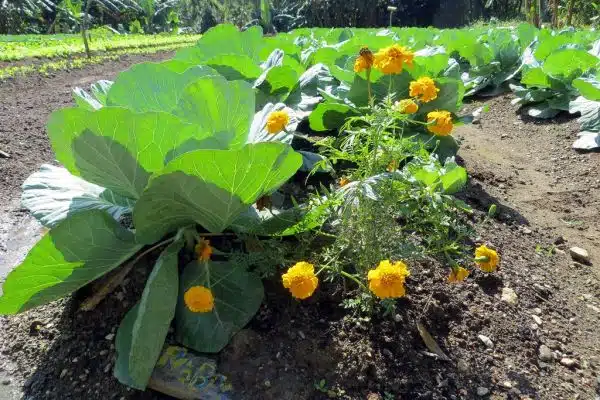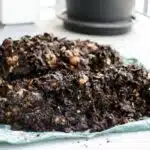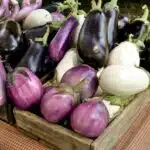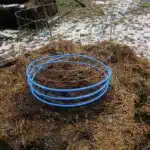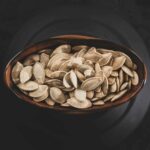Organic lettuce cultivation is a highly rewarding endeavor for those who seek to grow their own nutritious food. With the increasing demand for fresh and organic produce, it has become important to cultivate crops that are free from harmful chemicals and pesticides. Growing organic lettuce provides an opportunity to not only improve personal health but also contribute towards a sustainable environment.
Organic lettuce farming involves a set of principles and practices that prioritize soil health, biodiversity, and ecological balance. It is based on the concept of working with nature rather than against it, by creating a self-sustaining system that supports healthy plant growth. This guide aims to provide a comprehensive understanding of the various aspects involved in growing organic lettuce – from choosing the right seeds to harvesting and storing the crop. By following these guidelines, you can achieve a bountiful harvest of high-quality organic lettuce that can be enjoyed by your family or even shared with others in your community.
Understanding The Benefits Of Organic Lettuce
Organic lettuce is like a gift straight from nature’s bounty. It is grown using natural methods that promote soil health and biodiversity. Unlike conventional lettuce, organic lettuce is free from synthetic pesticides and fertilizers, which can harm the environment and our health.
Consuming organic lettuce offers numerous benefits to our bodies. This leafy green is packed with essential vitamins and minerals like vitamin C, K, calcium, and iron. It also contains antioxidants that help protect against diseases like cancer and heart disease. Additionally, organic lettuce has a high water content, making it an excellent hydrating food that supports healthy skin.
Compared to conventionally grown lettuce, organic lettuce has higher nutrient density due to the absence of harmful chemicals that can strip plants of their nutritional value. Choosing organic produce promotes environmental sustainability by reducing soil degradation, water pollution, and preserving biodiversity. Ultimately, choosing organic lettuce is not just about serving your own health; it’s about contributing to a healthier planet for generations to come. In the next section of this guide, we will explore how to choose the right seeds for your organic lettuce crop.
Choosing The Right Seeds For Your Organic Lettuce
Now that you understand the benefits of organic lettuce, it’s time to focus on seed selection and germination techniques. When choosing seeds for your organic lettuce, it’s important to consider the variety, disease resistance, and growth habits. Look for varieties that are known to do well in your specific climate and soil type.
Germination is a crucial step in the process of growing organic lettuce. To ensure successful germination, start by selecting high-quality seeds from reputable sources. There are various germination techniques you can use, including direct seeding and starting seeds indoors. Direct seeding involves planting the seeds directly into the soil outdoors, while starting seeds indoors allows you to control the environment and provide optimal growing conditions.
To further optimize your chances of success with organic lettuce cultivation, consider using a nested bullet point list:
- Variety Selection
- Consider local climate and soil type
- Choose disease-resistant varieties
- Germination Techniques
- High-quality seed selection from reputable sources
- Direct seeding or starting seeds indoors
As an expert in organic lettuce cultivation, I strongly recommend taking these steps seriously when selecting your seeds and germinating them properly. With careful consideration and attention to detail during this stage of the process, you can set yourself up for success when it comes time to prepare your soil for planting. Stay tuned for our next section on preparing the soil for optimal organic lettuce cultivation.
Preparing The Soil For Organic Lettuce Cultivation
Soil preparation is a crucial step in growing organic lettuce. The soil must be properly prepared to ensure that the lettuce plants receive all the necessary nutrients they require to grow and thrive. This can be achieved through various composting techniques, which are discussed in detail below.
One of the best ways to prepare soil for growing organic lettuce is by using compost. Composting is a natural process that involves breaking down organic matter into nutrient-rich soil. There are several composting techniques available, including hot and cold composting, vermicomposting, and sheet composting. Each technique has its own benefits and drawbacks, but all of them can produce high-quality soil for your lettuce plants.
Another important aspect of soil preparation is ensuring that the pH levels are balanced. Organic lettuce grows best in slightly acidic soil with a pH level between 6.0 and 7.0. If the pH levels are too high or too low, it can lead to nutrient deficiencies or toxicities, which can affect the growth and health of your lettuce plants. A simple way to test your soil’s pH level is by using a home testing kit or sending a sample to a laboratory for analysis.
Now that you understand how important it is to prepare your soil for growing organic lettuce let’s move on to watering and fertilizing your plants properly. By following these steps, you will increase the chances of having healthy and thriving lettuce plants that will provide you with delicious and nutritious leaves throughout the growing season.
Watering And Fertilizing Your Organic Lettuce
Watering and fertilizing are essential aspects of organic lettuce cultivation that require careful attention. Organic lettuce requires adequate water to ensure optimal growth and development. Drip irrigation is the most efficient method of watering as it ensures water is delivered directly to the roots, minimizing waste and reducing the risk of fungal infections. Drip irrigation also allows for controlled application of fertilizer, which enhances nutrient uptake and promotes healthy plant growth.
Composting techniques are valuable in providing organic matter that enriches soil fertility, which supports healthy lettuce growth. Compost can be made from a variety of materials such as food scraps, yard waste, and manure. The compost should be added to the soil before planting or during transplanting to ensure an adequate supply of nutrients for optimal growth. Additionally, incorporating mulch on top of the soil helps retain moisture while suppressing weed growth.
Incorporating both drip irrigation and composting techniques into your organic lettuce farming practices will significantly improve crop yields and quality while promoting sustainable farming methods. With proper watering and fertilizing techniques in place, growers can now focus on managing pests and diseases in their crops to ensure a bountiful harvest.
Managing Pests And Diseases In Organic Lettuce Farming
Pests and diseases are major challenges in organic lettuce farming. However, there are various natural remedies that can be employed to control them. One of the most effective ways is to use companion planting. This involves planting other crops alongside lettuce, which will help deter pests and attract beneficial insects. For instance, planting marigolds with lettuce helps to repel nematodes and aphids while attracting hoverflies, which eat aphids.
Another way to manage pests and diseases is through crop rotation. This involves planting different crops in a particular area each season so that pests and diseases do not build up in the soil. Additionally, intercropping involves planting two or more crops together in the same field at the same time. This method helps reduce pest damage as it confuses pests who cannot easily locate their host plants.
Organic farmers also use natural remedies such as neem oil, garlic spray, and horticultural soap to control pests and diseases. These remedies are preferred over synthetic pesticides because they are safer for human health and do not harm beneficial insects like bees. By employing these methods, organic lettuce farmers can effectively manage pests and diseases without compromising on quality or safety.
- Companion planting: Planting other crops alongside lettuce to deter pests
- Crop rotation: Planting different crops each season to prevent buildup of pests/diseases
- Intercropping: Planting multiple crops together in the same field to reduce pest damage
- Natural remedies: Using neem oil, garlic spray, horticultural soap instead of synthetic pesticides
- Safety for humans/bees: Natural remedies are safer for human health and do not harm beneficial insects
Harvesting Organic Lettuce: When And How To Do It
After successfully managing pests and diseases in your organic lettuce farm, it is important to know when and how to harvest the lettuce. Harvesting lettuce at the right time ensures that you get a good yield and also helps maintain the quality of the produce. One way to determine if your lettuce is ready for harvest is by checking its size. If the leaves are big enough for you to consume, then it’s time to harvest.
Harvesting can be done by cutting off the whole plant or by just plucking off the leaves. If you choose to cut off the whole plant, make sure to leave about an inch of stem so that new growth can occur. If you decide to pluck off the leaves, make sure not to remove more than a third of the plant as this may stunt its growth. After harvesting, composting leftovers is important as it helps reduce waste and also provides nutrients for future crops.
Companion planting can also aid in better harvesting of organic lettuce. Companion plants such as herbs like basil, chives, and cilantro help deter pests while also enhancing flavor in your salad. Other companion plants like marigolds bring in beneficial insects that control harmful ones. Proper harvesting techniques coupled with companion planting ensures that you get a bountiful harvest with high-quality produce that is free from pests and diseases. The next section will delve into how best to store and preserve your harvested organic lettuce for later use.
Storing And Preserving Organic Lettuce
Lettuce storage is an essential aspect of organic lettuce cultivation that requires careful attention. Proper storage and preservation techniques ensure that your lettuce stays fresh and crisp for longer periods. After harvesting, it is crucial to remove any excess dirt or debris from the leaves before storing them in a cool, dry place. This helps prevent rotting and spoilage.
Preserving lettuce can be done in several ways, including refrigeration, freezing, and pickling. Refrigeration is the most common method used to preserve lettuce as it helps slow down the rate of decay. To store lettuce in the fridge, wrap it in a paper towel or cloth and place it inside a plastic bag. Make sure to seal the bag tightly to prevent moisture from getting in.
Another way to preserve lettuce is by freezing it. Freezing works best for shredded or chopped lettuce varieties such as romaine or iceberg. Before freezing, blanch the leaves in boiling water for 1-2 minutes then immediately transfer them into an ice bath. Drain off any excess water then store the lettuce in airtight containers or freezer bags.
- Lettuce should be stored at temperatures between 32-40°F.
- Avoid storing lettuce near fruits such as bananas or apples as they emit ethylene gas that can cause premature ripening.
- Pickling is an excellent way of preserving excess lettuce and extending its shelf life.
By taking proper care of your harvested organic lettuce, you can maximize your yield while minimizing waste. In the subsequent section, we will discuss some tips on how to achieve this goal by improving your organic lettuce cultivation practices.
Tips For Maximizing Your Organic Lettuce Yield
- Soil preparation is critical for maximizing organic lettuce yield. The soil should be well drained, loose and fertile; a pH of 6.2-6.8 is ideal.
- When planting, select a variety that performs best in your area and plant in the early morning or late afternoon.
- Ensure the space between individual lettuce plants is at least 4 inches and sow the seeds to a depth of 1/4 inch.
- Lettuce needs approximately 1 inch of water per week during its growing season, however, too much water can lead to rotting and disease.
- When watering, use a soaker hose or drip irrigation to maintain the soil moisture, and avoid wetting the lettuce leaves.
- Apply an organic fertilizer every two weeks during the growing season to help promote healthy growth and increase the yield of organic lettuce.
Soil Preparation
When it comes to growing organic lettuce, proper soil preparation is crucial for maximizing yield. One of the first steps in soil preparation is to test the soil’s nutrient content. Soil testing methods can help determine if there are any deficiencies or excesses in key nutrients like nitrogen, phosphorus, and potassium. This information can then be used to determine what amendments may be needed, such as composting techniques that add organic matter to the soil.
Composting techniques can greatly improve the quality of the soil and help create an ideal environment for growing organic lettuce. Composting involves breaking down organic matter into a nutrient-rich material that can be added back into the soil. Common materials used for composting include vegetable scraps, grass clippings, leaves, and manure. By incorporating this material into the soil before planting, it can help increase water retention and provide essential nutrients for healthy plant growth.
In conclusion, taking the time to properly prepare the soil before planting is essential for maximizing your organic lettuce yield. Soil testing methods and composting techniques are just a few ways to ensure that your plants have all of the necessary nutrients they need to thrive. By following these tips and utilizing other best practices in organic lettuce cultivation, you can produce a bountiful crop that is both healthy and delicious.
Planting Techniques
After soil preparation, the next step in maximizing your organic lettuce yield is planting. Companion planting is a technique that can greatly benefit lettuce growth. Certain plants, when grown together, can help improve soil quality, deter pests and disease, and even enhance flavor. Some popular companion plants for lettuce include herbs like basil and chives or vegetables like carrots and radishes. Container gardening is also an option for those with limited space, as lettuce can be grown in pots or other containers.
When it comes to planting techniques, timing is key. Lettuce prefers cooler temperatures and should be planted in the spring or fall for best results. It’s important to space out the seeds or seedlings properly to allow for adequate airflow and prevent overcrowding. Proper watering techniques are also crucial for healthy plant growth. Lettuce needs consistent moisture but should not be overwatered as this can lead to disease.
In addition to these tips, it’s important to monitor your plants regularly for any signs of pests or disease. Taking preventative measures such as using natural pest control methods and practicing crop rotation can help keep your crops healthy and thriving. With proper planting techniques and care, you can enjoy a plentiful harvest of delicious organic lettuce all season long.
Watering Schedules
Watering is a critical aspect of growing organic lettuce. Proper watering techniques ensure consistent moisture and prevent drought stress, which can negatively impact plant growth and yield. One effective way to manage water usage is through drip irrigation systems. These systems allow water to be delivered directly to the base of the plants, minimizing waste and reducing the risk of disease caused by wet leaves.
In addition to using drip irrigation, it’s important to monitor soil moisture levels regularly. Lettuce requires consistent moisture but should not be overwatered as this can lead to disease. To determine whether your plants need water, you can use a soil moisture meter or simply stick your finger into the soil about an inch deep. If the soil feels dry at that depth, it’s time to water.
Drought management is also crucial for maximizing your organic lettuce yield. During periods of drought or hot weather, it may be necessary to increase watering frequency or adjust the timing of watering sessions. Mulching around the base of plants can also help retain moisture in the soil and reduce evaporation. By following these watering techniques and implementing proper drought management strategies, you can ensure healthy plant growth and a bountiful harvest of organic lettuce.
Creating A Sustainable And Eco-Friendly Organic Lettuce Farm
An interesting statistic to note is that organic farming practices can reduce greenhouse gas emissions by up to 40 percent compared to conventional farming methods. When it comes to creating a sustainable and eco-friendly organic lettuce farm, it’s essential to consider the entire process from seed to harvest. One crucial aspect of sustainability is packaging. By using sustainable packaging options, such as biodegradable or reusable containers, farmers can reduce waste and minimize their environmental impact.
In addition to sustainable packaging, another way to promote sustainability in organic lettuce farming is through community supported agriculture (CSA) programs. These programs allow farmers to sell their produce directly to consumers, cutting out the middleman and reducing transportation-related emissions. Additionally, CSA programs foster a sense of community and support for local farmers.
When creating a sustainable and eco-friendly organic lettuce farm, it’s important to consider all aspects of the process. Sustainable packaging and community supported agriculture are just two examples of ways that farmers can reduce their environmental impact while promoting healthy eating habits within their communities. In the next section, we will explore ideas for using and sharing your organic lettuce harvest.
Sharing The Bounty: Ideas For Using And Sharing Your Organic Lettuce Harvest
Having successfully established a sustainable and eco-friendly organic lettuce farm, the next step is to share the bounty of your harvest with others. There are numerous ways to do this, from donating excess produce to local food banks or soup kitchens, to starting a community-supported agriculture (CSA) program for interested individuals in your area. Additionally, you can host events such as farm-to-table dinners or workshops on organic gardening to educate others and build relationships with members of your community.
Sharing ideas for using and preparing organic lettuce can also be a great way to encourage others to incorporate more fresh, healthy produce into their diets. Consider creating a recipe book or blog featuring creative and delicious ways to use lettuce in salads, wraps, sandwiches, and more. You could also host cooking classes or demonstrations at local farmer’s markets or community centers to show people how easy it can be to prepare nutritious meals using organic lettuce.
Overall, sharing the bounty of your organic lettuce harvest not only benefits those around you but also helps promote sustainable and eco-friendly agriculture practices. By inspiring others to grow their own produce or support local farmers who prioritize environmentally conscious farming methods, we can work towards building healthier communities and a more sustainable future for all.
Conclusion
Organic lettuce cultivation is a rewarding and satisfying experience, both for the environment and for your health. By choosing to grow organic lettuce, you are not only reducing the amount of pesticides and chemicals in your food but also contributing to a sustainable and eco-friendly future.
As an organic lettuce cultivation expert, I cannot stress enough the importance of starting with high-quality seeds that are adapted to your region. Preparing the soil is also crucial, as it provides nutrients for your plants to thrive. Consistent watering and fertilization will ensure healthy growth while keeping pests and diseases at bay.
Managing pests and diseases in organic lettuce farming can be challenging but with proper knowledge, it can be overcome without resorting to harmful chemicals. There are also various ways to store and preserve your organic lettuce harvest, so you can enjoy it even after the growing season has ended.
Maximizing your yield requires attention to detail throughout each stage of the growing process. Finally, creating a sustainable farm that reduces waste and uses renewable resources should be a top priority for any responsible farmer.
In conclusion, cultivating organic lettuce is more than just growing food; it’s about creating a better future for ourselves and our planet. Let us embrace this symbolic vegetable as a catalyst for change towards healthier living practices. With dedication, patience, and knowledge passed down through generations of farmers before us, we too can reap the bounty of an abundant harvest while preserving our natural resources for generations to come.
Image Credits
- “Organic lettuce, Las Terrazas” by runneralan2004 (featured)

